Abstract
For a three-component system consisting of solvent (1), polymer or polyelectrolyte (2J), and a nonelectrolyte or electrolyte solute (3), a two-domain description is developed to describe thermodynamic effects of interactions between solute components (2J) and (3). Equilibrium dialysis, which for an electrolyte solute produces the Donnan distribution of ions across a semipermeable membrane, provides a fundamental basis for this two-domain description whose applicability is not restricted, however, to systems where dialysis equilibrium is established. Explicit expressions are obtained for the solute-polymer preferential interaction coefficient gamma 3,2J (nonelectrolyte case) and for gamma +,2J and gamma -,2J, which are corresponding coefficients defined for single (univalent) cations and anions, respectively: gamma +,2J = magnitude of ZJ + gamma -,2J = 0.5(magnitude of ZJ + B-,2J + B+,2J) - B1,2Jm3/m1 Here B+,2J, B-,2J, and B1,2J are defined per mole of species J, respectively, as the number of moles of cation, anion, and water included within the local domains that surround isolated molecules of J; ZJ is the charge on J; m3 is the molal concentration of uniunivalent electrolyte, and m1 = 55.5 mol/kg for water. Incorporating this result into a general thermodynamic description(derived by us elsewhere) of the effects of the activity a+ of excess uniunivalent salt on an equilibrium involving two or more charged species J (each of which is dilute in comparison with the salt) yields:SaKobs bS/d a+ A(r+2J r 2j) A(B+2J B-2 2B12Jm3/m1)where KObS is an equilibrium quotient defined in terms of the molar concentrations of the participants, J, and A denotes astoichio metrically weighted combination of terms pertaining to the reactant(s) and product(s). The derivation presented here does not depend on any particular molecular model for salt-polyelectrolyte (or solute-polymer) interactions; it therefore generalizes our earlier (1978) derivation.
Full text
PDF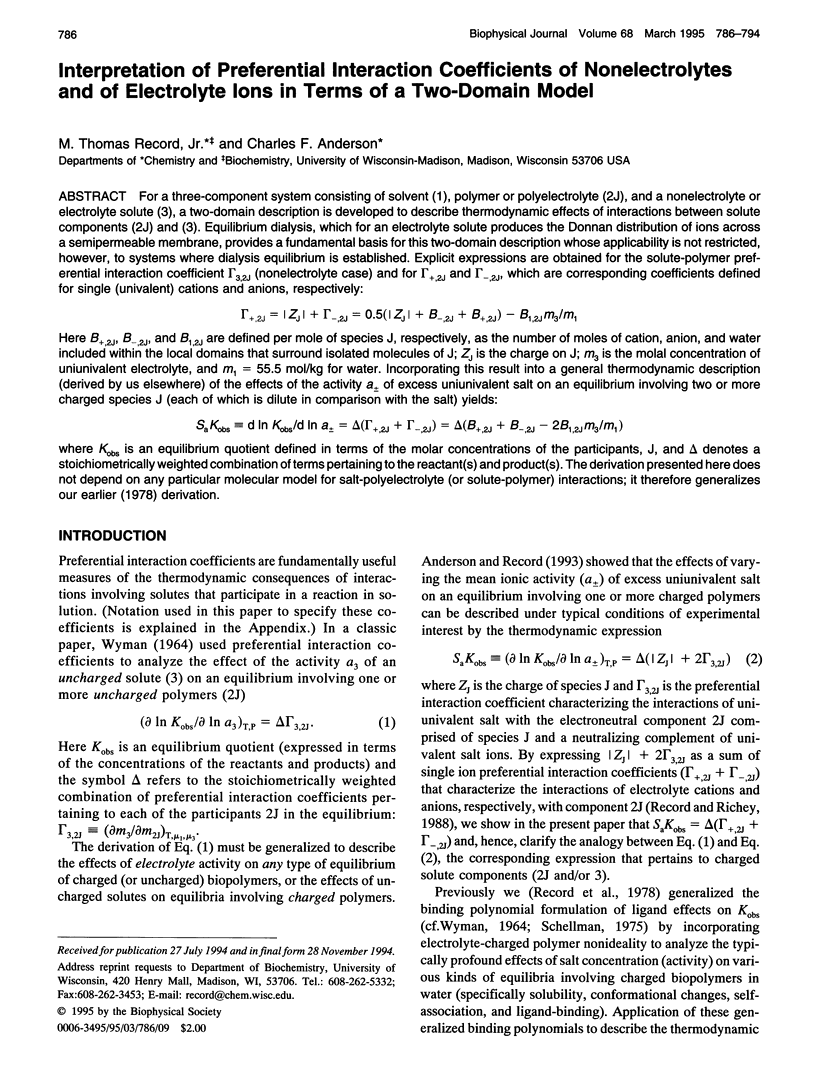
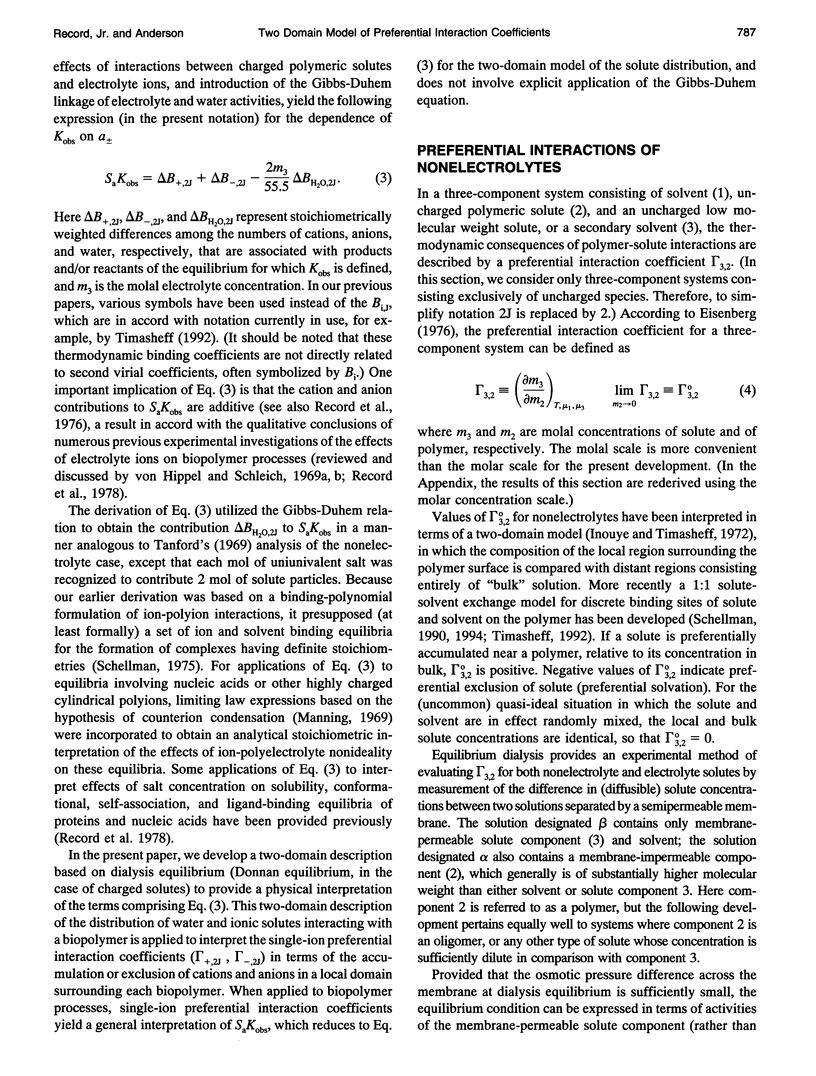
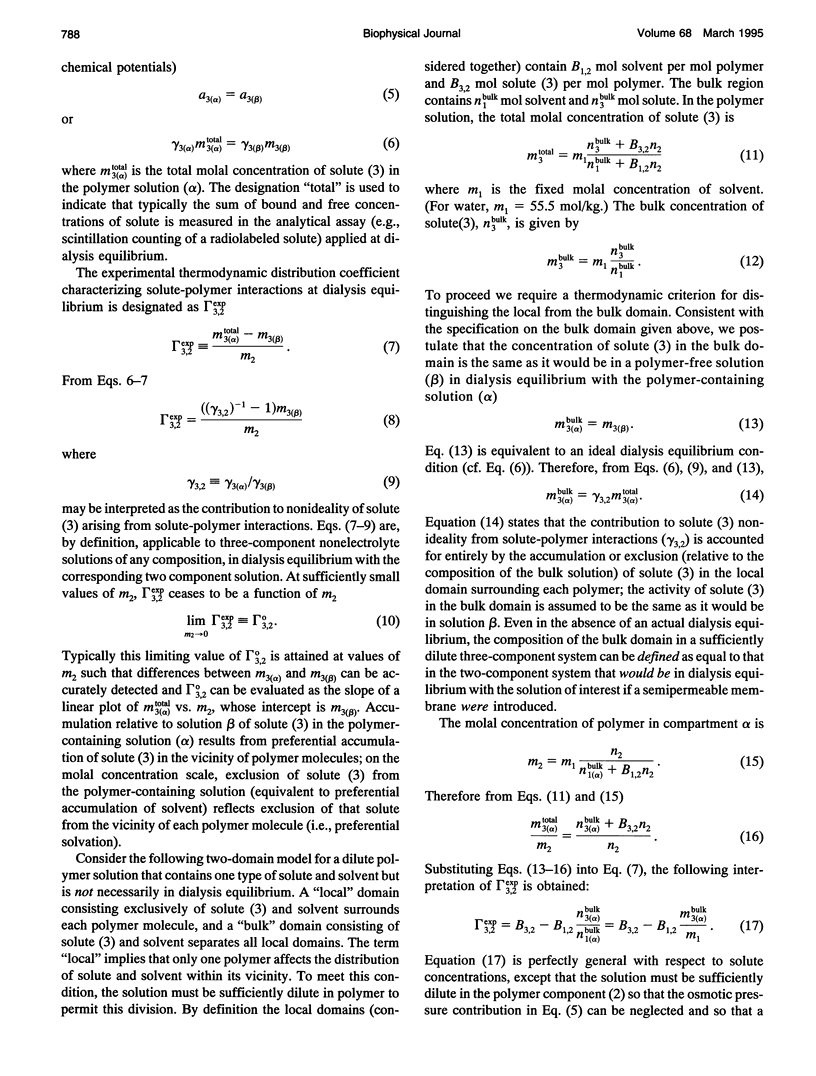
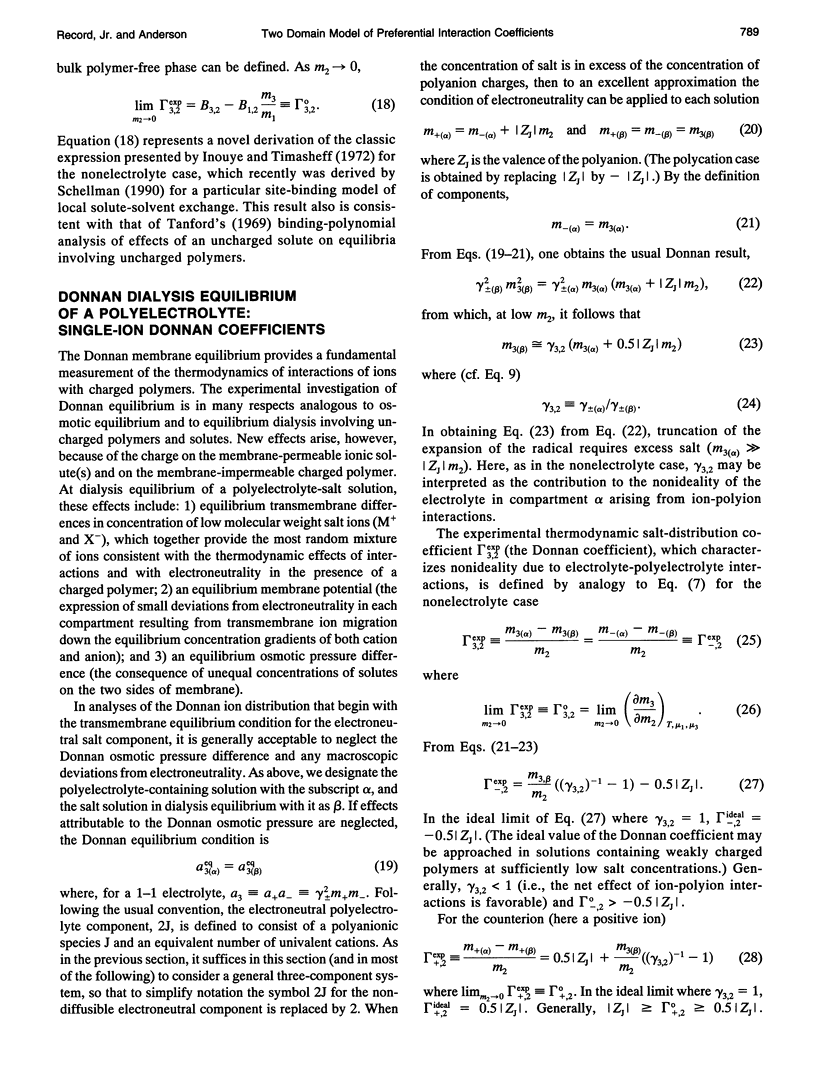
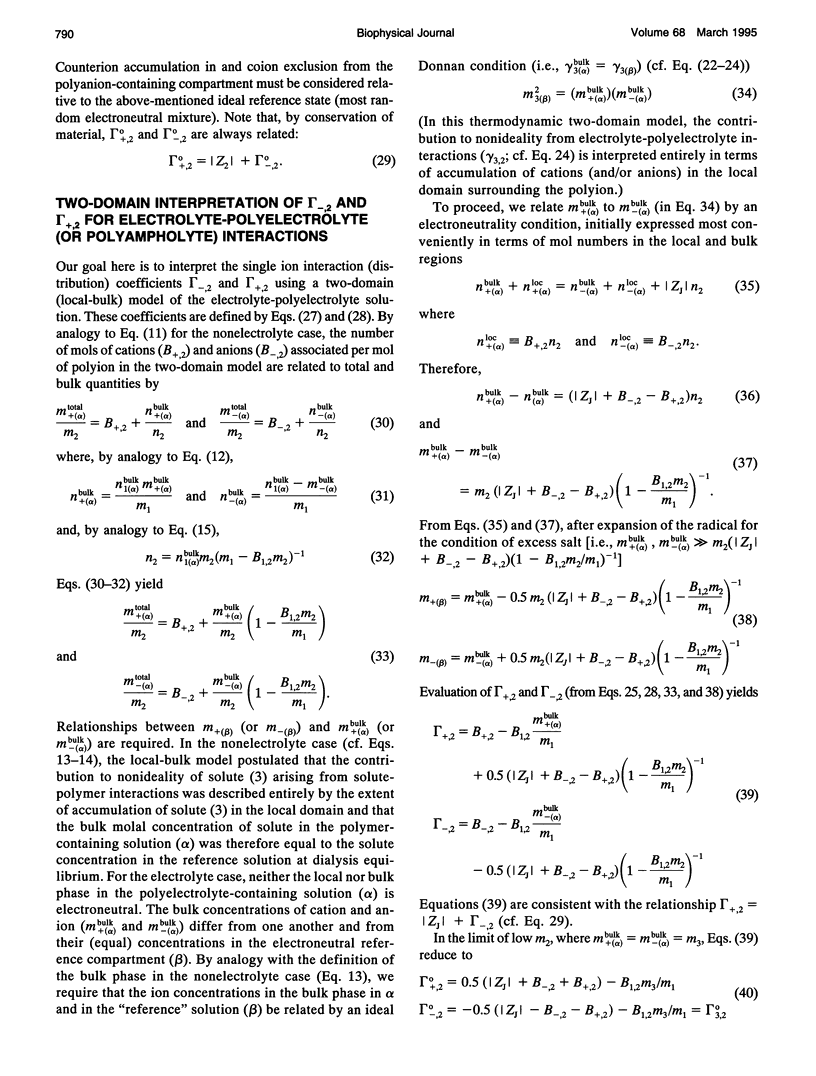

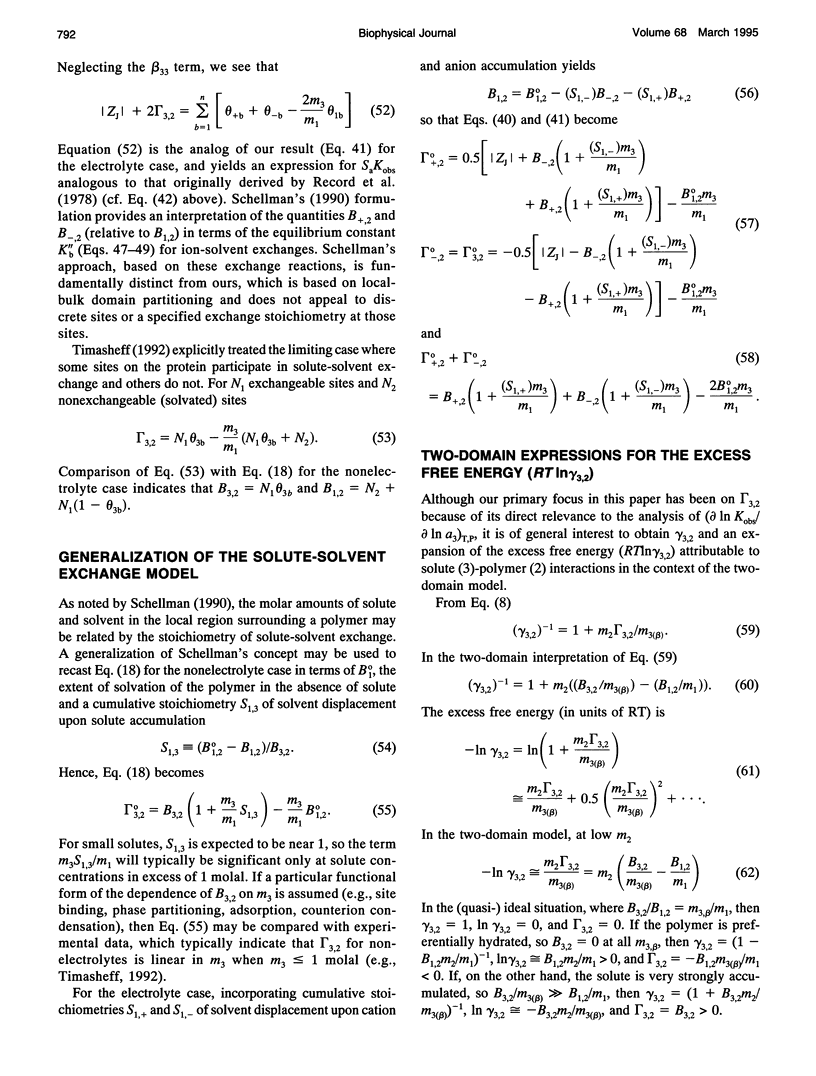
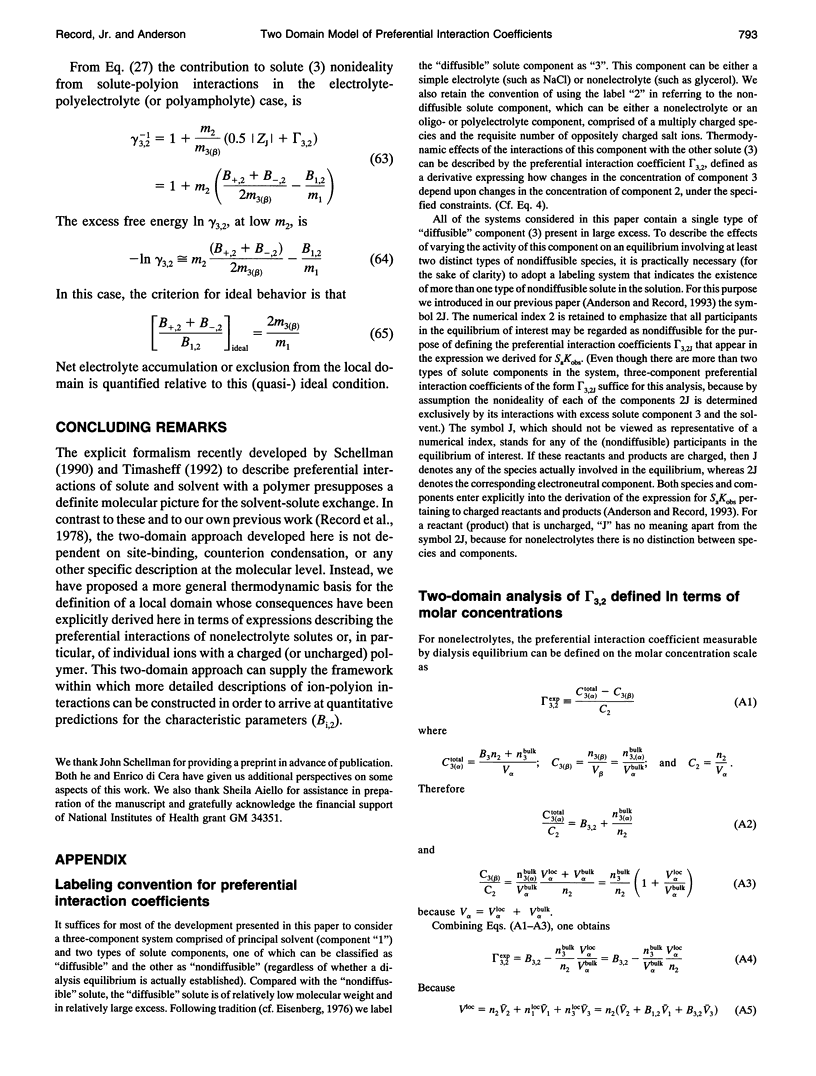

Selected References
These references are in PubMed. This may not be the complete list of references from this article.
- Inoue H., Timasheff S. N. Preferential and absolute interactions of solvent components with proteins in mixed solvent systems. Biopolymers. 1972;11(4):737–743. doi: 10.1002/bip.1972.360110402. [DOI] [PubMed] [Google Scholar]
- Record M. T., Jr, Anderson C. F., Lohman T. M. Thermodynamic analysis of ion effects on the binding and conformational equilibria of proteins and nucleic acids: the roles of ion association or release, screening, and ion effects on water activity. Q Rev Biophys. 1978 May;11(2):103–178. doi: 10.1017/s003358350000202x. [DOI] [PubMed] [Google Scholar]
- Record M. T., Jr, Lohman M. L., De Haseth P. Ion effects on ligand-nucleic acid interactions. J Mol Biol. 1976 Oct 25;107(2):145–158. doi: 10.1016/s0022-2836(76)80023-x. [DOI] [PubMed] [Google Scholar]
- Schellman J. A. A simple model for solvation in mixed solvents. Applications to the stabilization and destabilization of macromolecular structures. Biophys Chem. 1990 Aug 31;37(1-3):121–140. doi: 10.1016/0301-4622(90)88013-i. [DOI] [PubMed] [Google Scholar]
- Schellman J. A. The thermodynamics of solvent exchange. Biopolymers. 1994 Aug;34(8):1015–1026. doi: 10.1002/bip.360340805. [DOI] [PubMed] [Google Scholar]
- Tanford C. Extension of the theory of linked functions to incorporate the effects of protein hydration. J Mol Biol. 1969 Feb 14;39(3):539–544. doi: 10.1016/0022-2836(69)90143-0. [DOI] [PubMed] [Google Scholar]
- Timasheff S. N. Water as ligand: preferential binding and exclusion of denaturants in protein unfolding. Biochemistry. 1992 Oct 20;31(41):9857–9864. doi: 10.1021/bi00156a001. [DOI] [PubMed] [Google Scholar]
- WYMAN J., Jr LINKED FUNCTIONS AND RECIPROCAL EFFECTS IN HEMOGLOBIN: A SECOND LOOK. Adv Protein Chem. 1964;19:223–286. doi: 10.1016/s0065-3233(08)60190-4. [DOI] [PubMed] [Google Scholar]


